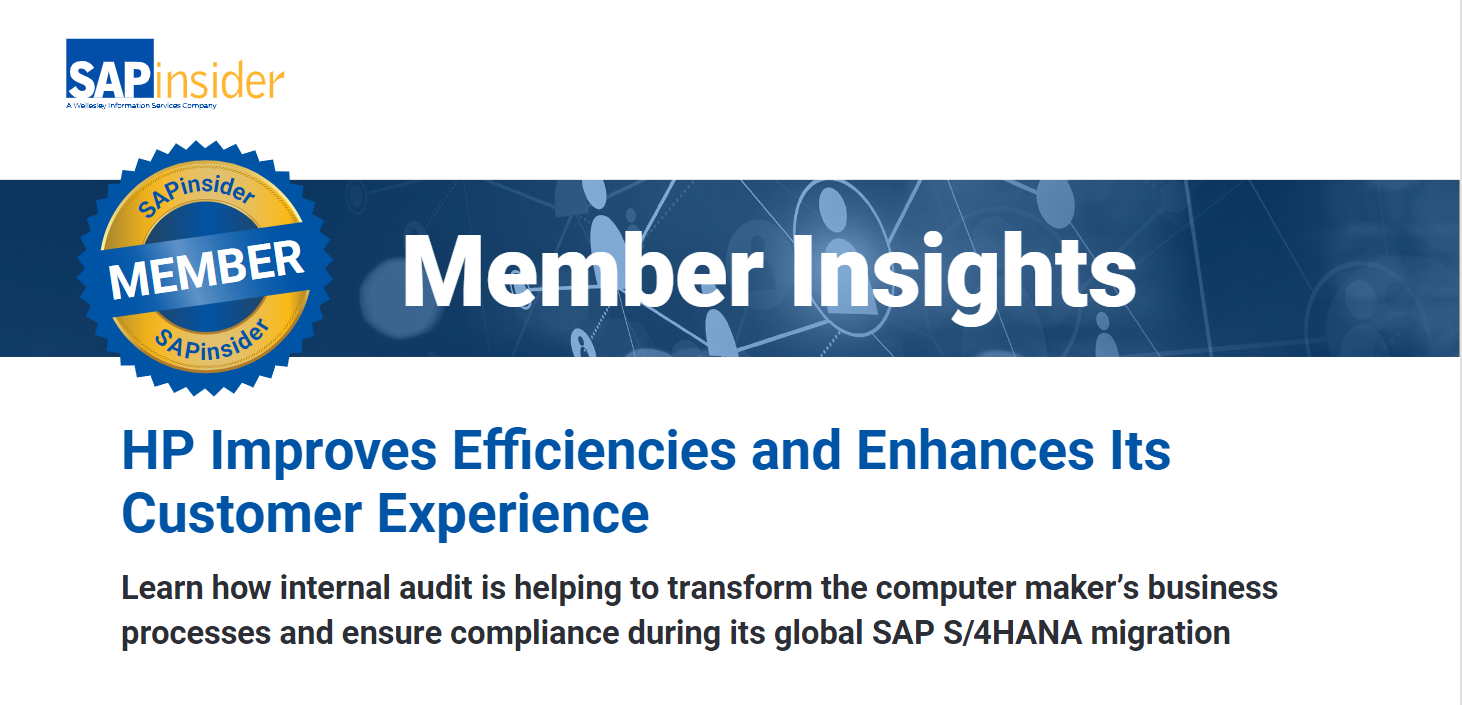Understanding SAP S/4HANA Implementation Risks with RSM – Part One: First Steps
Meet the Authors
SAP organizations are under pressure to make the move from SAP ECC and other legacy systems to SAP S/4HANA ahead of the 2027 end-of-maintenance deadline. Yet many of these companies are already behind schedule.
SAPinsider’s recent Deployment Approaches to SAP S/4HANA 2024 benchmark research report found that just 33% of SAP organizations have made the move to SAP S/4HANA, and only 14% more plan to make the move by the end of 2024. This leaves over half of all companies rushing to complete this vital project ahead of the deadline—and many have not even begun the planning process.
Without proper planning, companies risk missing out on crucial considerations and may make critical mistakes for this important implementation.
Explore related questions
Measure twice, cut once
Companies may be delaying their SAP S/4HANA migration plans simply because they do not have a good idea of where to start. But charging into an SAP S/4HANA implementation without a plan can lead to issues down the line.
To help companies better understand the risks associated with an SAP S/4HANA implementation, SAPinsider sat down with a panel of experienced implementation professionals from RSM to highlight some of the key mistakes that companies make and how they can be avoided.
“One of the most common themes comes back to that phrase ‘measure twice, cut once.’ We see so many programs that are not even measuring once, let alone twice,” said Joe Corro, a director at RSM’s risk consulting practice specializing in implementation risk.
“Even at companies with gold-plated names and a quarter of a billion-dollar budgets, when we perform risk assessments we see a lot of issues with planning—project management office models not being thoroughly planned, governance models where the program teams don’t all fully understand their own decision-making mechanisms and channels. Deliverables that are not fully aligned between the client and the system integrator (SI). That surprises me that we see that across the gamut of all implementations, regardless of who the SI is.”
Initial assessments
Before hurtling down the path to a go-live date, companies should perform an initial assessment of their system as it stands, how SAP S/4HANA fits into their organization and what they hope to gain from the move. While many organizations think this move is simply a lift-and-shift one, there are different configurations that come into play.
“If you’re leveraging SAP S/4HANA, then leverage the tool to its full extent so you can operationalize your processes and reduce some of the financial impact through addressing other requirements like Sarbanes-Oxley. An initial assessment is crucial. With S/4HANA being on private cloud, there are additional capabilities like artificial intelligence that can be leveraged. Companies need to think about which models fit their organizational needs and serve their long-term goal,” said Shreyas Reddy, ERP director at RSM.
Timing is everything
While organizations are naturally concerned about making the wrong decision, indecision poses threats to a successful SAP S/4HANA implementation as well—particularly as the end-of-maintenance deadline approaches.
“With the 2027 deadline, all the research and the articles are saying that there will not be a pool of qualified implementation resources to be able to accommodate the demand that’s going to happen. They’re also not getting the A teams. Most likely, a lot of these companies are going to get the C teams and D teams,” said Steve Biskie, principal, national SAP Risk and Automation Services leader at RSM.
What this means for SAPinsiders
With the end-of-maintenance deadline looming, SAP organizations that have yet to make the move to SAP S/4HANA need to start the process. However, they cannot afford to rush into an implementation and overlook crucial steps. These organizations should begin by working with a trusted partner to complete an initial assessment—evaluating their current situation and determining how to meet upcoming business goals.
For more information on crucial steps to avoiding SAP S/4HANA implementation risks, stay tuned to this series for more insights from RSM.






